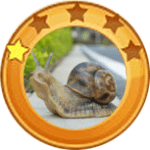- Home
- Shop
- Forest Series
- Grassland Series
- Desert Series
- Contact
- Home
- Shop
- Forest Series
- Grassland Series
- Desert Series
- Contact

Snail Series





2 Ways in Controlling
With the help of 2 simplified joysticks and a boat-shaped switch, your child can drive this car independently. Parents can also use the included remote control to master direction and adjust speed for younger kids.
Robust & Safety
Tough plastic shell holds up to 66 lbs for years of use. A 4-point adjustable seat belt and soft rubber bumper strip offer double protection. A wide footrest and high backrest make your baby feel relaxed and comfortable.
Excellent Performance
Powered by 2 rechargeable 6V batteries that let your kids enjoy 45-60 minutes of riding fun. Equipped with 12V dual motors, this vehicle speeds up to 2 mph to provide your little one with an exciting battle experience.


CHARACTERISTICS
The Chipmunk is a member of the family Mammalia, Rodentia and Sciuridae. It is also known as the Striped Squirrel, the Timber Tiger and the Mini-bear. The body length among most Chipmunks ranges from 5.5 to 6.3 inches and the tail length is 5 Inches. Chipmunks typically weigh about 0.02 pounds and live about 5 to 10 years. They have small but prominent ears which face forwards, and small eyes on the sides of their heads. Most wild Chipmunks are lively.


Lorem ipsum dolor sit amet, consectetur adipiscing elit. Ut elit tellus, luctus nec ullamcorper mattis, pulvinar dapibus leo.


CHARACTERISTICS
The Garden Snail is a species of land snail in the family Helicidae, which includes some of the most familiar land snails. Of all terrestrial molluscs, this species may well be the most widely known. The adult bears a hard, thin calcareous shell 25-40 millimetres in diameter and 25-35 millimetreshigh, with four or five whorls. The shell is variable in coloring and shade of color, but generally it has a reticulated pattern of dark brown, brownish-golden, or chestnut with yellow stripes, flecks, or streaks (characteristically interrupted brown colour bands). The aperture is large and characteristically oblique, its margin in adults is whitish and reflected.

RANGE AND HABITAT
The Garden Snail is native to the Mediterranean region and its present range stretches from northwest Africa and Iberia, eastwards to Asia Minor and Egypt, and northwards to Britain.

DIET
The Garden Snail is a primarily a herbivore with a wide range of host plants. It feeds on numerous types of fruit trees, vegetable crops, rose bushes, garden flowers, and cereals. It also is an omnivorous scavenger that feeds on rotting plant material and on occasion will scavenge animal matter, such as crushed snails and worms.

BEHAVIOR
Habits and Lifestyle
The body of the Garden Snail is soft and slimy, brownish-grey, and able to be retracted entirely into the shell, which the animal does when inactive or threatened. When injured or badly irritated, the snail produces a defensive froth of mucus that might repel some enemies or overwhelm aggressive small ants and the like. During dry or cold weather it seals the aperture of the shell with a thin membrane of dried mucus. The epiphragm helps the snail retain moisture and protects it from small predators such as some ants.
Mating Habits
Like other Pulmonata, the individuals of the Garden Snail are hermaphrodites, producing both male and female gametes. Reproduction is usually sexual, although self-fertilisation sometimes occurs. During a mating session of several hours, two snails exchange sperm. About two weeks after fertilisation, the snail lays a batch of about 80 spherical pearly-white eggs into crevices in the topsoil, or sheltered under stones or the like. In a year it may lay approximately six batches of eggs. The size of the egg is 4 mm. The young snails take one to two years to reach maturity.

The Chipmunk is a member of the family Mammalia, Rodentia and Sciuridae. It is also known as the Striped Squirrel, the Timber Tiger and the Mini-bear. The body length among most Chipmunks ranges from 5.5 to 6.3 inches and the tail length is 5 inches. Chipmunks typically weigh about 0.02 pounds and live about 5 to 10 years. They have small but prominent ears which face forwards, small eyes on the sides of their heads. Most wild Chipmunks are lively.
The Red Squirrel, a member of the Sciuridae, is an arboreal, omnivorous rodent often referred to as a Forest Seeder and folklore as the Devil King Squirrel.
The Arizona Gray Squirrel, also known as the American Gray Squirrel, is a member of the family Rodentia and Sciuridae. It is small in size, with gray fur and a belly between white and cream. It has long ears, no tufts of fur and a fluffy tail edged in white. The body is about 16-20 inches long and weighs up to 1.4 pounds.
The Rock Squirrel, also known as Sao Maozi or Stone Mouse, belongs to the rodent and is a species in the family Sciuridae. The most common natural predators of the Rock Squirrel include bobcats, owls, eagles and snakes. Though the Rock Squirrel is cute, alert, and courageous, it is still considered a pest due to its habit of destroying crops.
The Abert’s Squirrel is a member of the genus Sciurus with a body length of 18-22.8 inches, a tail length of 7.5-9.8 inches and a weight of 2.2 pounds, and can live up to 10 years in the wild. Its most distinctive feature is tassels of fur about 0.8-1.2 inches long at the tip of its ears, which looks very interesting. In addition, it is alert and agile.

The Tortoise, the Hare… and the Snail
Once upon a time there was a tortoise, a hare, and a snail. The hare was always boasting about how fast he was, and the others were growing tired of his bragging. So one fine day, the tortoise challenged him to a race. He told the hare, “Well, you might think you’re so fast, but I can beat you in a race!”
Hearing this, the hare burst out laughing so hard he almost fell down his rabbit hole. “Ha!,” he exclaimed. “You couldn’t even outrun Little Miss Snail over there. I accept your challenge.”
The race was on!
The next day, all the animals of the meadow came out to see them begin. At the starting line was the hare, the tortoise, and the snail (you didn’t think she’d let the hare bully her, did you?) The hedgehog announced “On your mark, get set, and… go!!!”
And so they were off.
If you’ve heard this story before, you may remember who won the race. The hare was so overconfident about winning that he decided to take a nap, certain there was no way the tortoise could win. Of course that’s exactly what the tortoise eventually did, crossing the finish line just as the hare awoke from his nap and belatedly tried to catch up.
But this isn’t the whole story. What about the snail, whom we last saw disappearing into a tuft of grass just past the starting line?
Well, as it turns out, she was having quite the adventure of her own.
After she entered the cool shade of that tuft of grass, she drank some drops of dew still left over from the early morning. Refreshed, she slowly made her way up a big hill, meeting lots of other small animals along the way. She hitched a ride on the back of a caterpillar, played games with a family of ants, and took a nap of her own later in the afternoon.
In fact, she found herself having so much fun that she entirely forgot all about the race, preferring instead to pursue her own adventures.
At one point she heard some celebrating in the direction of the finish line, accompanied by a hare screaming “No!!! It can’t be!!!!” She smiled to herself and resumed listening to the crickets in the field make their sweet music. When, a few days later, she finally passed by the tattered remnants of ribbon that said “Finish line,” she was too engrossed in her own adventures to pay much attention to it.
Instead, the snail kept going and going, becoming interested in one thing, and then another and another and another. She ended up making lots of varied and interesting friends, and had one exciting adventure after another.
Many years later, she looked back on a happy and exciting life filled with ups, downs, and everything in between. What had started out as a short race turned out to be a journey. A wondrous journey.



Follow Us: